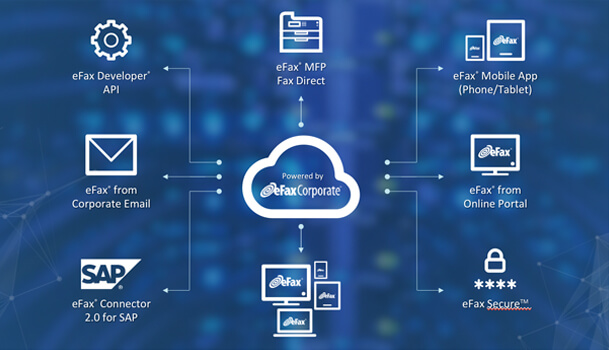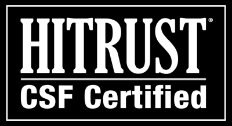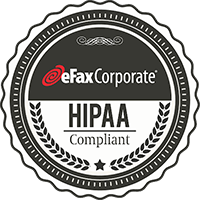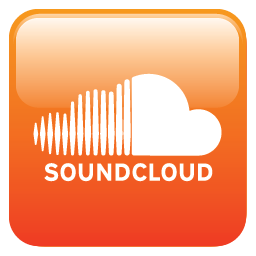Have you heard about Bluetooth-enabled “smart” inhalers? These new devices, just hitting the market now, promise to help asthma sufferers administer their medication correctly.
That matters more than you might realize for the roughly 25 million Americans with asthma. As the Wall Street Journal recently reported, studies have found patients misuse their inhalers the majority of the time, and as a result they typically receive only between 7% and 40% of an inhaler’s medicine.
But even if neither you nor anyone you know suffers from asthma, these smart inhalers are part of a much larger—and potentially much more exciting—story that you should be paying attention to.
We are living through the greatest, fastest-paced era of technological innovations in the history of healthcare.
Developments in IT and new technologies are helping physicians provide better care to patients, giving researchers access to broader and richer data than ever to help them create more effective medicines and treatments, and empowering all of us to take a more active role in our own health.
Here are five key trends in healthcare IT that you should keep an eye on. We will see them affect the healthcare industry in the very near future.
Artificial Intelligence (AI)
Artificial intelligence (AI) sounds like science fiction, but it just means equipping computer systems to perform tasks that can mimic human intelligence. And it’s a real thing in medical care today.
As Forbes has reported, the most common application of AI in healthcare is the use of algorithms. Computers are aiding physicians and other caregivers in cancer treatments, for example, by reviewing massive amounts of data against consensus algorithms from cancer-treatment experts, and recommending approaches (surgery, chemotherapy, a combination of treatments) with the highest probability for success.
The Forbes article also points out that AI has many other valuable uses—such as training computers to recognize visual patterns, and natural-language processing—which could also greatly help doctors provide more effective care over time.
The Internet of Things (IoT)
This is the healthcare IT trend you’re the most likely already aware of, even if you’ve never described it this way.
The Internet of Things, or “IoT,” is a catchall term for all of our devices that connect to the Internet—like your Alexa from Amazon.
In healthcare, IoT devices include your fitness-tracking watch or the clip-on device that you wear when you exercise or to keep track of your steps throughout the day. It could even include your smartphone, if you have any health or fitness apps installed on it.
Two of the biggest challenges to healthcare-related IoT technology are data management and security. Remember those Bluetooth-enabled smart inhalers I mentioned in the introduction? These are examples of IoT devices. Now consider the challenge of managing and storing all of the real-time patient data being sent by millions of those IoT inhalers over the Internet every day to hospitals and healthcare networks.
Consider, also, that all of this patient health data is regulated under privacy laws such as HIPAA. Healthcare providers receiving this information face stiff penalties for allowing their patients’ data to be compromised or hacked, which means they’ll have to work hard to ensure this information is secure as it travels from a patient’s watch or bracelet, over the Internet, to their organization’s servers.
But although the healthcare industry has been relatively slow to adopt IoT applications, you can expect to see it grow over the coming years.
Big Data Analytics
It’s probably bad luck to use a weapon as a metaphor in a discussion about healthcare, but the exponential increase in health-related data is a double-edged sword.
Thanks to the ability of computer servers to store ever-increasing amounts of data, and the Internet’s always-increasing capacity to transmit that data across networks, the healthcare industry can now receive and store more data than ever.
The challenge, though, is how a healthcare organization can make use of all of this raw data—such as the real-time information coming in to their networks from patients’ IoT devices. Because they’ve historically lacked the tools and applications to turn this raw data into actionable intelligence, many companies in the medical professional have underutilized this information.
But in recent years we have seen the widespread availability of “big data analytics” solutions, applications able to process, analyze, and make informed recommendations based on the massive amounts of raw data sitting on servers and in databases.
Using big data analytics, for example, healthcare providers can help make smarter decisions—more quickly—to help their patients. Insurance companies can process enormous amounts of historic patient data to help tailor their insurance offerings. And researchers can now analyze all of this raw data to uncover previously unseen patterns showing behaviors or even geographic areas that could elevate risks of certain illnesses.
Blockchain and Cryptocurrency
Bet you didn’t see this one coming. But yes, cryptocurrencies and the blockchain are even affecting healthcare IT.
If you haven’t yet heard a useful definition of it, blockchain is simply a distributed and decentralized bookkeeping technology designed to keep digital events—like the buying and selling of cryptocurrencies—in chronological order and to keep it from being altered or deleted. The basic idea is to maintain your wealth and conduct transactions without the need for banks or a government’s paper currency.
Why would blockchain and cryptocurrency benefit healthcare? Several reasons, but the most important is probably security.
Using the blockchain could help people protect their own private health information. The technology is designed, after all, to eliminate the need for centralized control of people’s data, and people can also remain anonymous with their transactions.
This trend might take a bit longer than the others described here, but healthcare industry leaders are already beginning to put blockchain on their roadmaps. Citing a 2017 IBM study, for example, Forbes pointed out that 56% of healthcare executives have plans to deploy a commercial blockchain solution by 2020.
The Continued Rise of Cybersecurity Threats
To this point we’ve been discussing the positive healthcare IT trends to watch out for. But unfortunately the bad guys are out there, too, trying to get rich by making life more difficult for the rest of us.
As CSO Magazine has reported, healthcare is the #1 cyber attacked industry. This makes sense when you consider how valuable patient health data can be on the black market. The personal information your healthcare provider keeps, after all, can include your full name and birth date, social security number, phone number, policy number, diagnosis codes, and billing information. Crooks can use this data to create phony IDs to buy and then resell expensive medical equipment, and even cash in on false insurance claims.
All of this explains why, as Reuters titled an article a few years back, “Your medical record is worth more to hackers than your credit card.”
We at eFax Corporate see this all the time—healthcare organizations worried that their old fax infrastructure is leaving their patients (and their company’s reputation) vulnerable to an attack from hackers. It’s one of the primary reasons healthcare companies are among the largest customers of our HIPAA compliant secure cloud fax service.
Because the bad guys aren’t going away. In fact, they’re getting bolder and more sophisticated every year.












